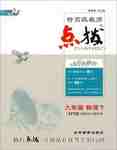题目内容
Nineteenth-century writers in the United States, whether they wrote novels, short stories, poems or plays, were powerfully drawn to the railroad in its golden years. In fact, writers responded to the railroads as soon as the first were built in the 1830’s. By the 1850’s, the railroad was a major presence in the life of the nation. Writers such as Ralph Waldo Emerson and Henry David saw the railroad both as a boon(要求) to democracy(民主国家) and as an object of suspicion. The railroad could be and was a despoiler(掠夺者) of nature, furthermore, in its manifestation of speed and noise. It might be a despoiler of human nature as well. By the 1850’s and 1860’s, there was a great distrust among writer and intellectuals of the rapid industrialization of which the railroad was a leading force. Deeply philosophical historians such as Henry Adams lamented the role that the new frenzy for business was playing in eroding traditional values. A distrust of industry and business continued among writers throughout the rest of the nineteenth century and into the twentieth.
For the most part, the literature in which the railroad plays and important role belong to popular culture rather than to the realm of serious art. One thinks of melodramas, boys’ books, thrillers, romances, and the like rather than novels of the first rank. In the railroads’ prime years, between 1890 and 1920, there were a few individuals in the United States, most of them with solid railroading experience behind them, who made a profession of writing about railroading—works offering the ambience of stations, yards, and locomotive cabs. These writers, who can genuinely be said to have created a genre, the “railroad novel”, are now mostly forgotten, their names having faded from memory. But anyone who takes the time to consult their fertile writings will still find a treasure trove of information about the place of the railroad in the life of the United States.
The underlined word “it” in the passage refers to______.
A. railroad B. manifestation C. speed D. nature
In the first paragraph, the author implies that writers’ reactions to the development of railroads were______.
A. highly enthusiastic B. both positive and negative C. unchanging D. Disinterested
According to the passage, the railroad played a significant role in literature in all of the following kinds of books except_______.
A. thrillers B. boys’ books C. romances D. important novels
The phrase “first rank” in the second paragraph is closest in meaning to______.
A. largest category(类别) B. highest quality C. earliest writers D. most difficult language
Which of the following topics is the main idea of passage?
A. The role of the railroad in the economy of the USA
B. Major nineteenth century writers
C. The conflict between expanding industry and preserving nature
D. The railroad as a subject for literature
【小题1】A
【小题2】B
【小题3】D
【小题4】B
【小题5】D
解析:
略

 特高级教师点拨系列答案
特高级教师点拨系列答案Elizabeth Blackwell was born in England in 1821, and moved to New York City when she was ten years old. One day she decided that she wanted to become a doctor. That was nearly impossible for a woman in the middle of the nineteenth century. After writing many letters asking for admission(录取) to medical schools, she was finally accepted by a doctor in Philadelphia. She was so determined that she taught school and gave music lessons to get money for the cost of schooling.
In 1849, after graduation from medical school. she decided to further her education in Paris. She wanted to be a surgeon(外科医师) , but a serious eye problem forced her to give up the idea.
Upon returning to the United States, she found it difficult to start her own practice because she was a woman. By 1857 Elizabeth and her sister, also a doctor, along with another woman doctor, managed to open a new hospital, the first for women and children Besides being the first woman physician and founding her own hospital , she also set up the first medical school for women.
【小题1】Why couldn’t Elizabeth Blackwell realize her dream of becoming a surgeon?
| A.She couldn’t get admitted to medical school |
| B.She decided to further her education in Paris |
| C.A serious eye problem stopped her |
| D.It was difficult for her to start a practice in the United States |
| A.She was a woman. |
| B.She wrote too many letters. |
| C.She couldn’t graduate from medical school. |
| D.She couldn’t set up her hospital. |
| A.Eight years | B.Ten years | C.Nineteen years | D.Thirty-six years |
| A.became the first woman physician |
| B.was the first woman doctor |
| C.and several other women founded the first hospital for women and children |
| D.set up the first medical school for women |
 The
Hurt Locker
The
Hurt Locker Slumdog
Millionaire
Slumdog
Millionaire The
Departed
The
Departed Dances
With Wolves
Dances
With Wolves Brave
heart
Brave
heart Gladiator
Gladiator